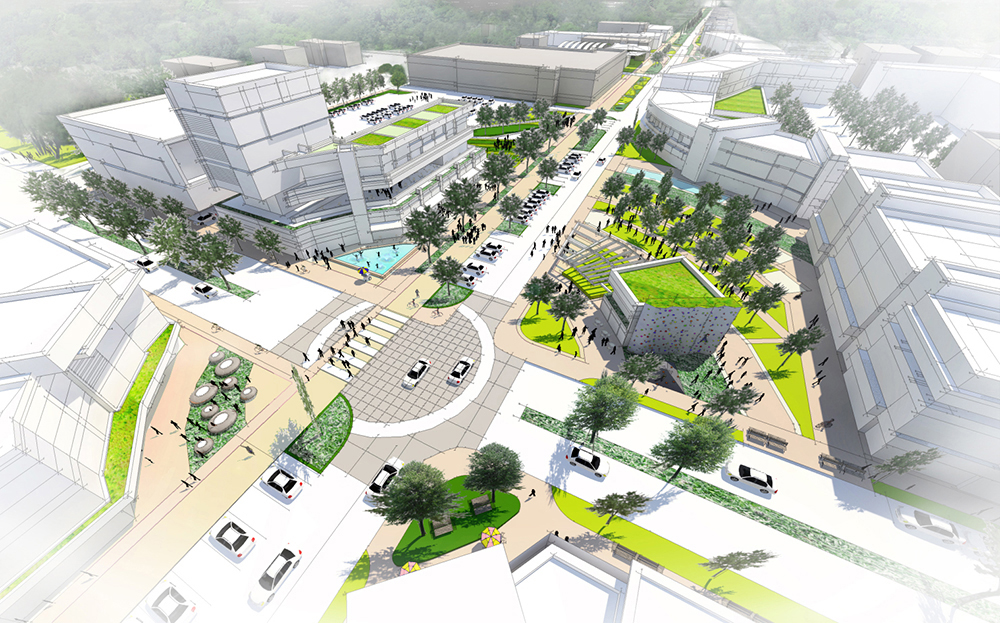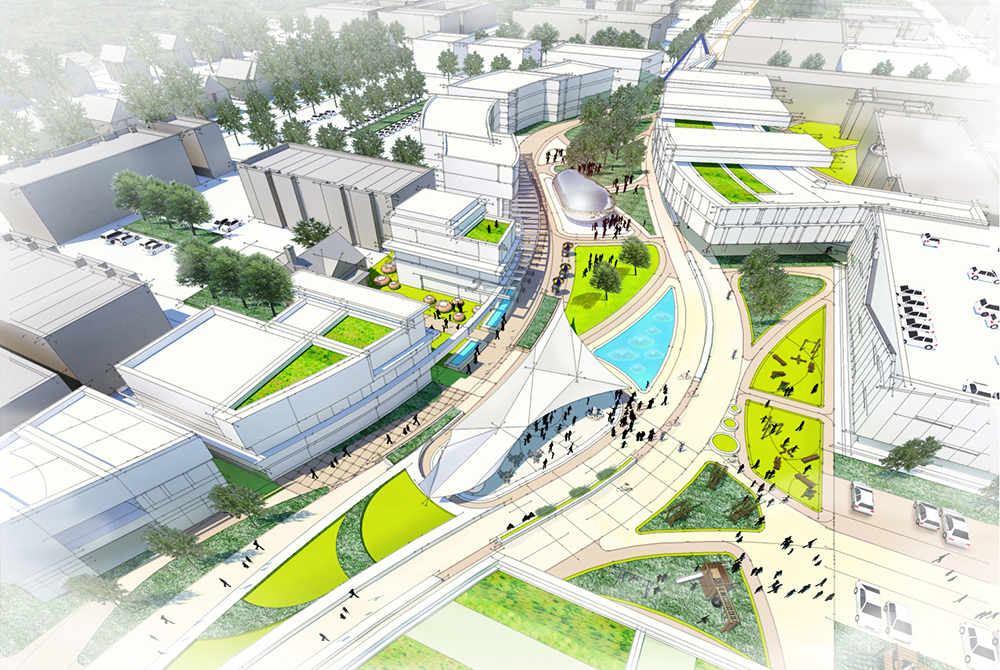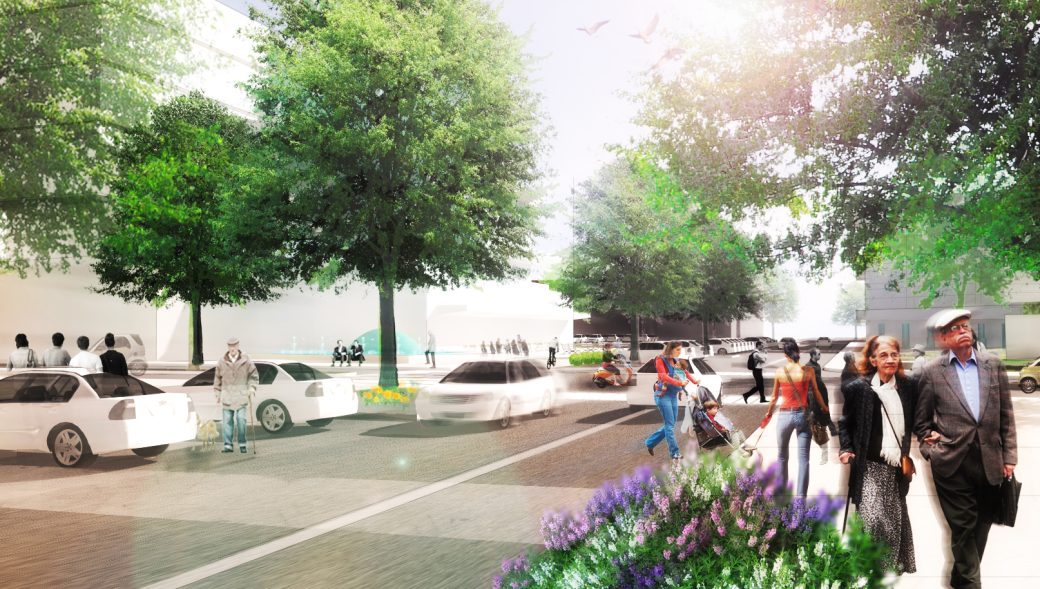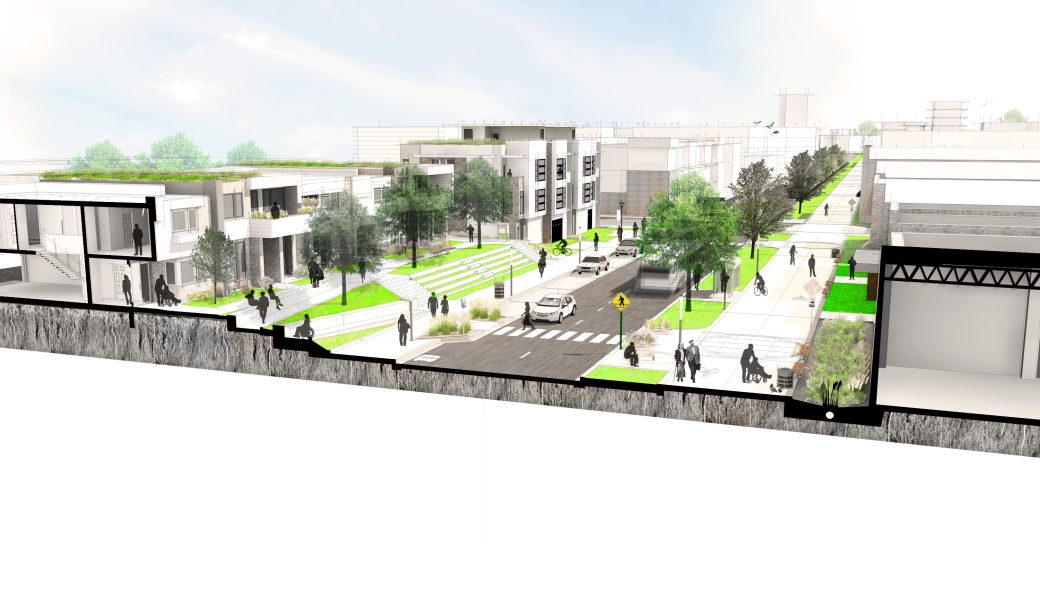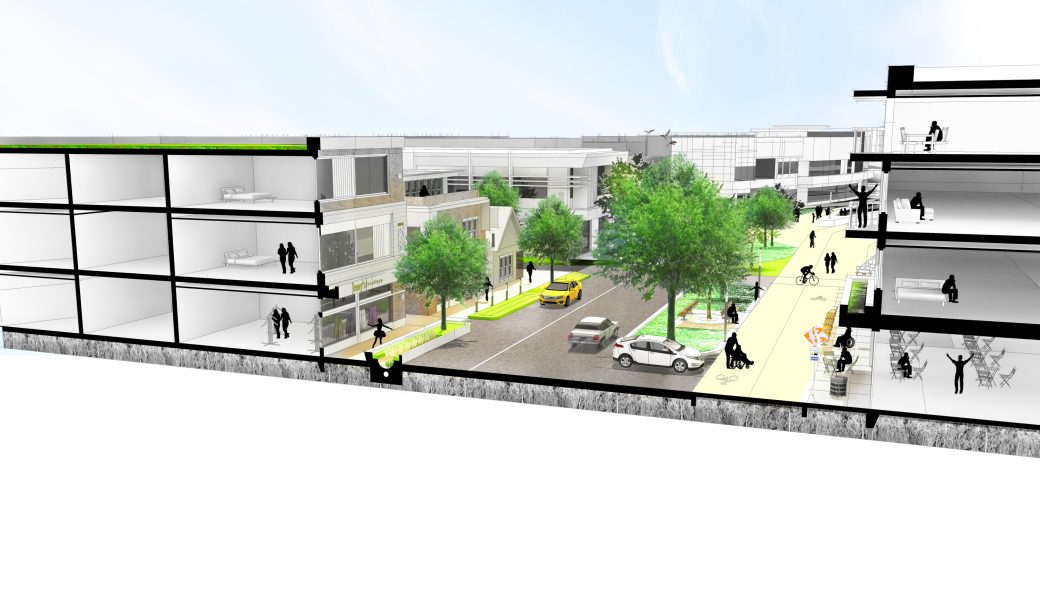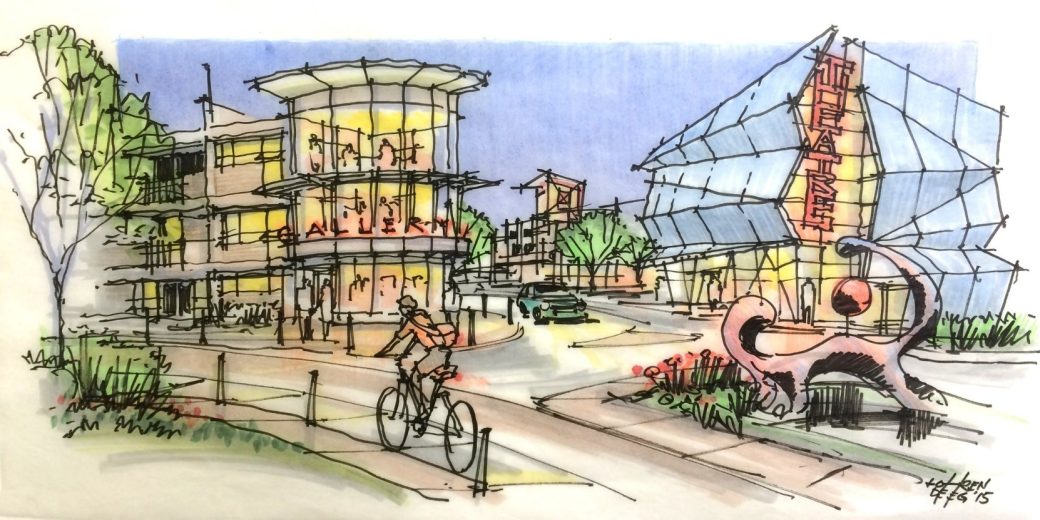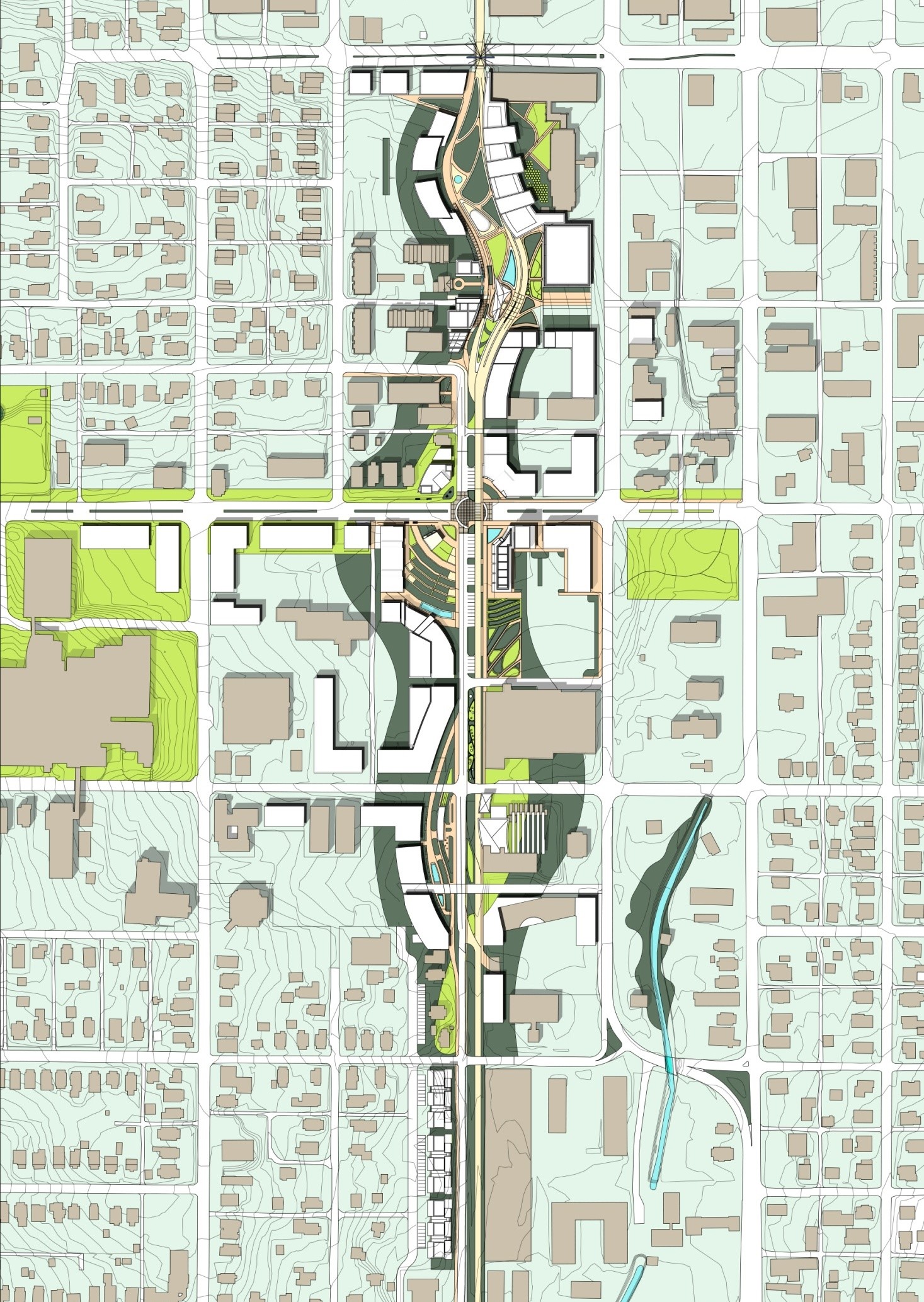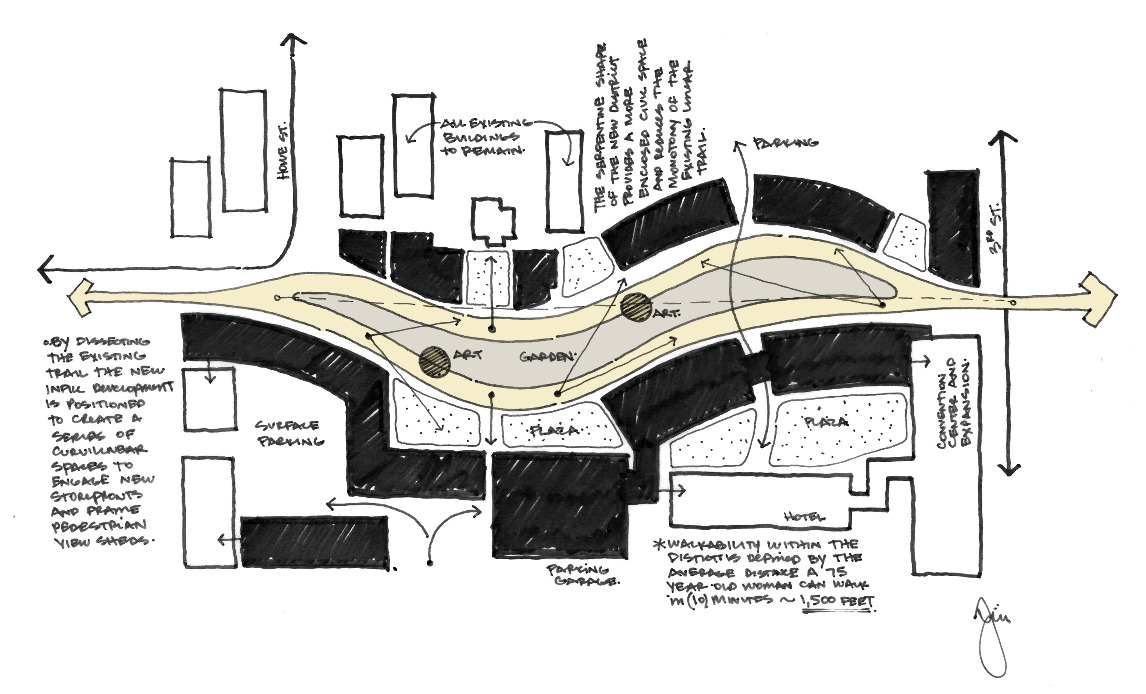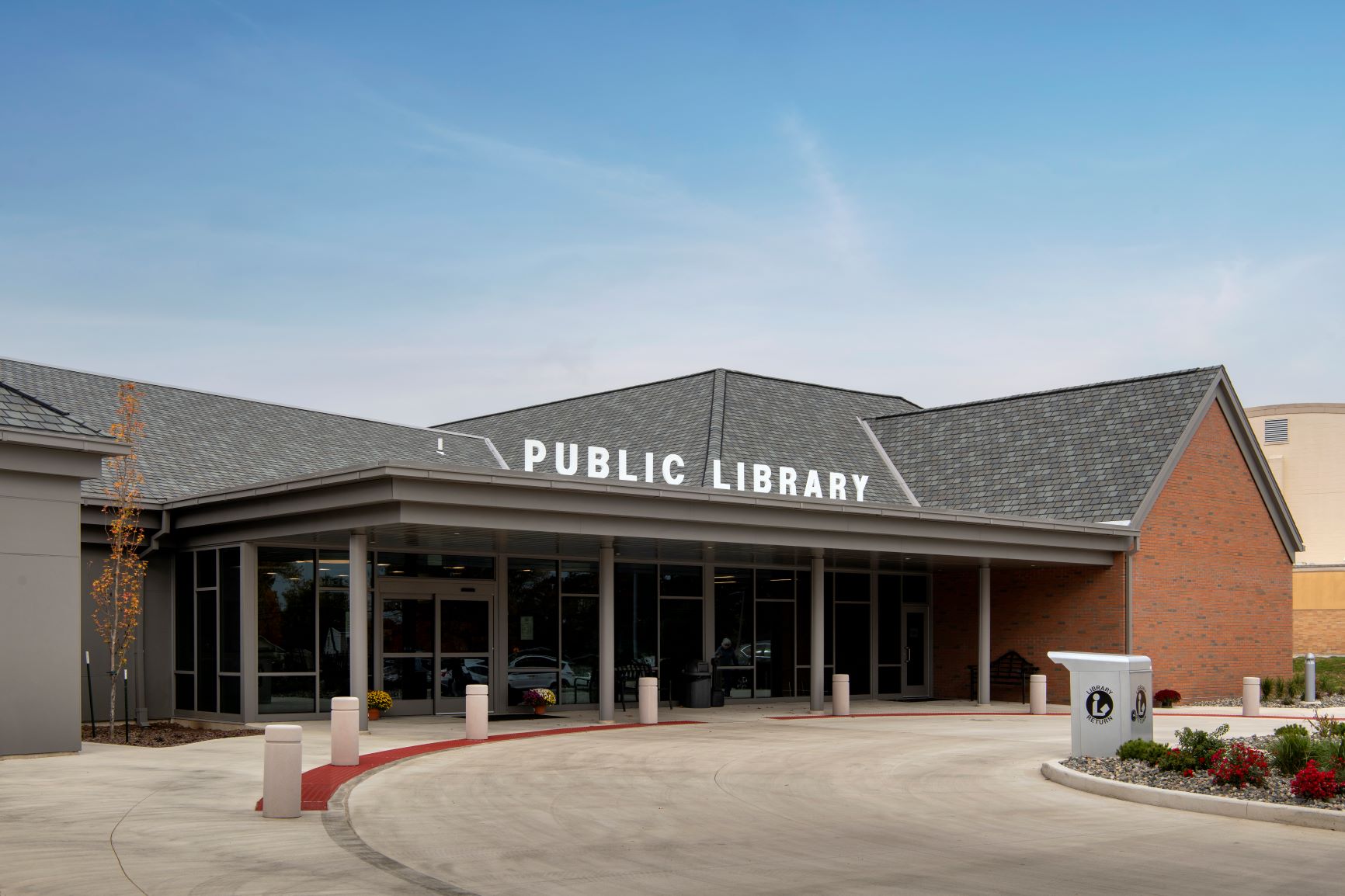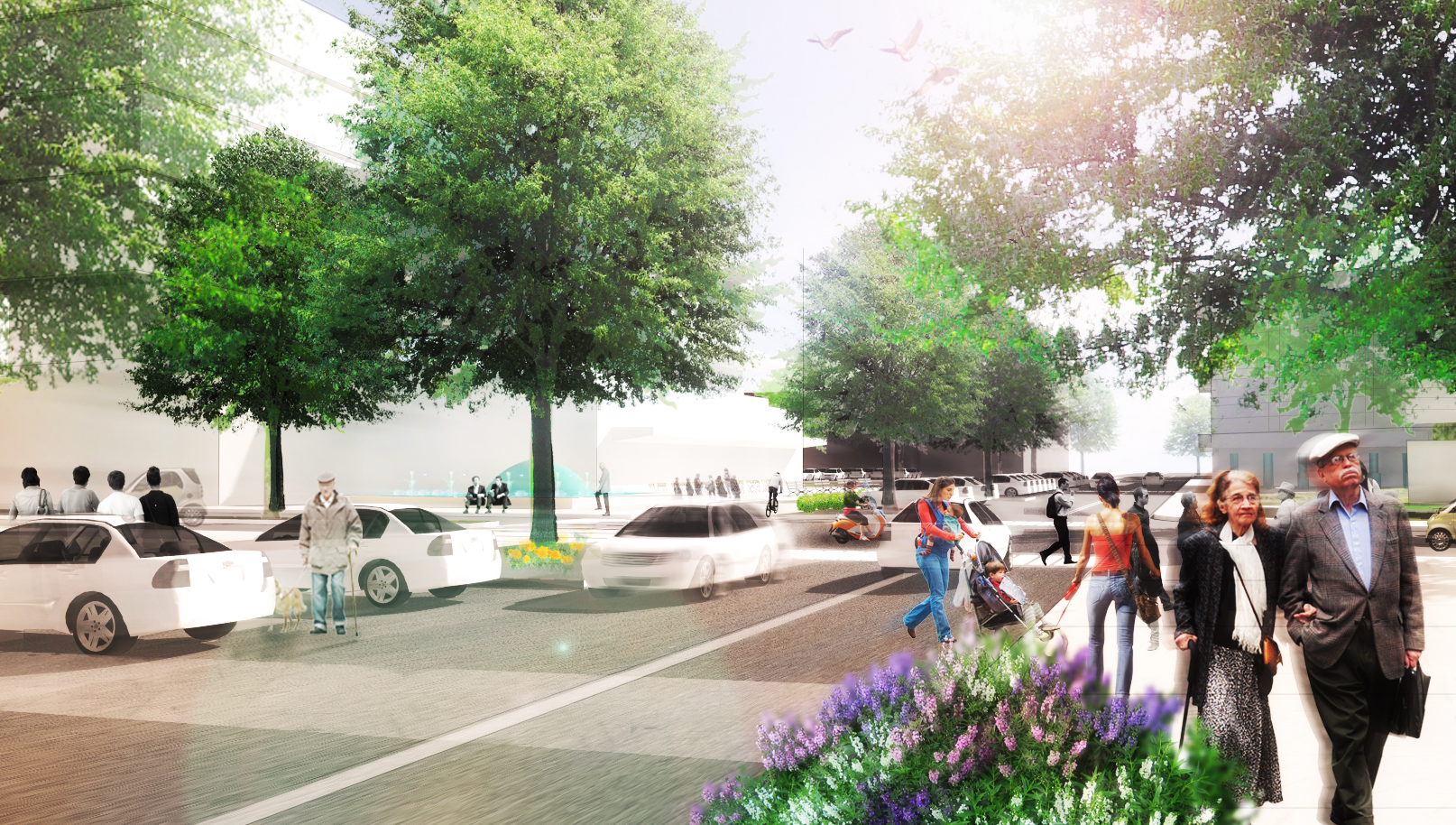
Commons
Bloomington Lifetime Community District
Back to the Future
Bloomington, Indiana
Between 2005-2040 Indiana’s population will grow by 15%. During that same time, its 65 and older population will grow by 90%. To prepare for these shifting demographics, cities will be forced to consider Lifetime Community Districts. Individual definitions of what constitutes as a ‘livable’ or ‘lifetime’ community varies. AARP defines it as “one that has affordable and appropriate housing, supportive community features and services, and adequate mobility options, which together facilitate personal independence and the engagement of residents in civic and social life.”
In specifically defining the priorities for elder-friendly communities, the Center for Home Care Policy & Research outlines four key domains that should be considered: (1) Addressing Basic Needs, (2) Promoting Social and Civic Engagement, (3) Optimizing Physical and Mental Health and Well-Being, and (4) Maximizing Independence for Frail and Disabled. Although several communities and organizations throughout the country address these issues individually, few have formally adopted a comprehensive strategy that embraces them collectively.
There are examples of Lifetime Community Districts appearing all over the country; however, one of the first was a concept designed by MKM in Bloomington, Indiana. With the hope of reenergizing a pedestrian trail system dissecting their historic downtown, the City of Bloomington created a vision for a community designed for all ages and abilities to thrive. Funded by a national grant from the Pfizer Foundation in partnership with Indiana University’s Center for Aging and Community, this concept was intended to define how economic development could take the aging projections facing most Midwestern communities and transform it into a financial opportunity – one that would change how their community thought about future development.
Through a series of stakeholder discussions and partnerships, the concept for the district focused on engaging marginalized populations – specifically pre-driving teenagers and older adults. Pedestrian networks were identified to ensure that everyone within the district was within walking distance of key goods and services (e.g., fresh produce, healthcare). By utilizing the same metrics outlined in AARP’s Livability Index, this planning typology allows existing rural downtowns to be transformed into intergenerational neighborhoods that understand and systematically prioritize all facets of wellness, utilizing these elements not as healthcare strategies, but as planning principles. The result was a development model coined as a ‘Lifetime Community District” (LCD), a planning model that incentivizes development that promotes physical, social, mental, and economic well-being for persons of all abilities, across the entire lifespan.
Awarded:
AIA Fort Wayne Merit Award

